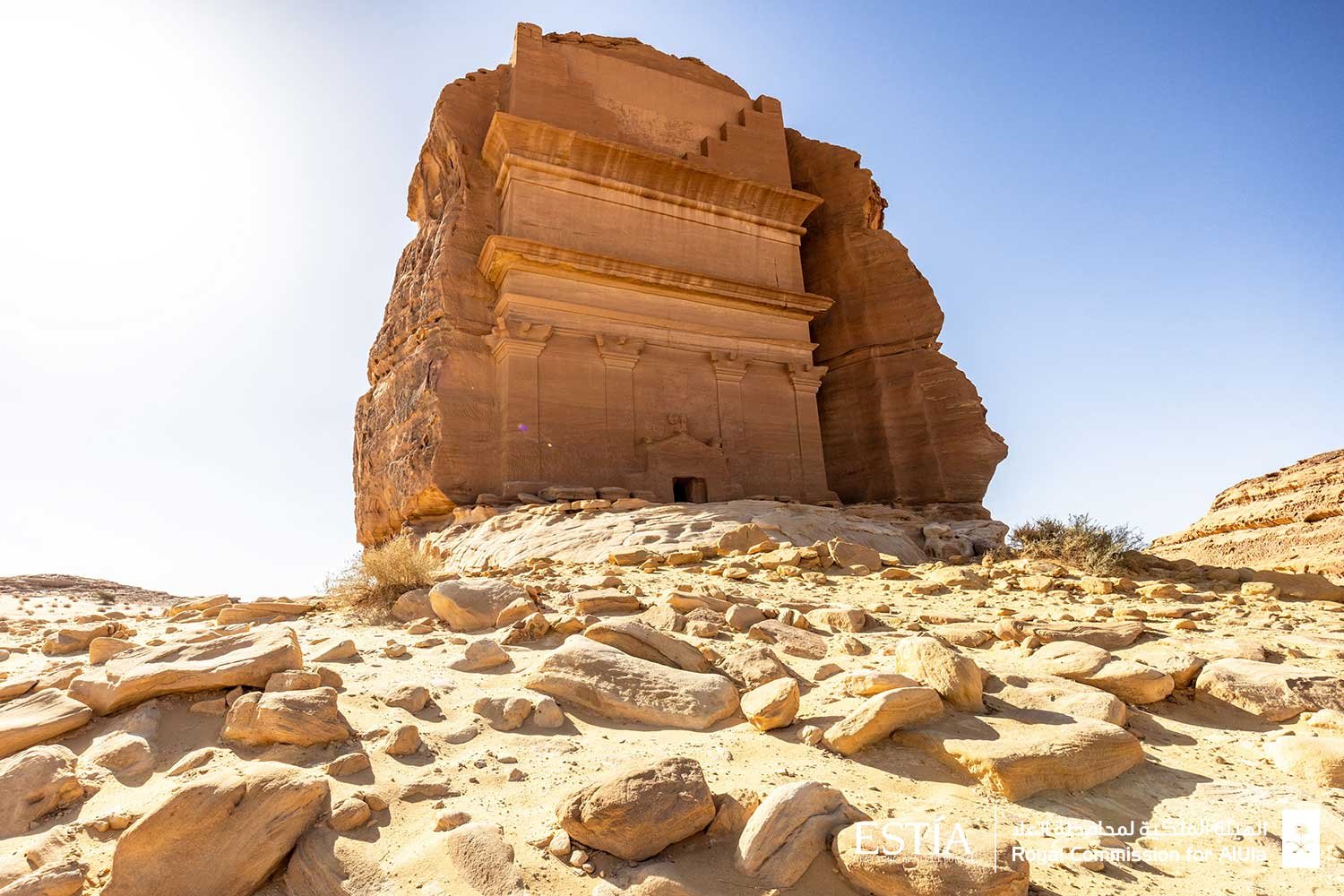
The tomb IGN110 at Hegra, also known as Tomb of Lihyan son of Kuza, is located in an isolated position, about 2 km east of the southern entrance to the site. The rock massif housing the tomb is approximately 23 meters high and 18 meters wide, with the entrance to the burial chamber situated 4 meters above ground level. The façade, almost as tall as the massif itself, is decorated in Hegra style, featuring Egyptian and Greco-Roman architectural elements, but many parts remain unfinished, such as the area near the entrance. It is hypothesized (L. Nehmé) that the tomb changed ownership before the first owner had time to inscribe his name. The unfinished carving traces allow visitors to observe the different stages of construction, especially in low sunlight.
From an architectural perspective, the façade showcases typical Hegra style, with a crowning composed of two half-crowsteps resting on an Egyptian entablature. Below this, there is a plain attic, followed by a Greco-Roman entablature. The lower part of the façade is particularly interesting due to its unfinished state: the bases and shafts of the four pilasters are not defined, nor is the decoration of the entrance. The pediment above the door consists of an unrefined architrave and tympanum, crowned by barely sketched lateral acroteria, likely depicting vases, and a central acroterion representing a detailed sphinx.
Axe – Pick – Point chisel – Flat chisel
Plaster (half-crowsteps, Egyptian entablature, frieze lowerarchitrave)
Les tombeaux nabatéens de Hegra, vol. II, Nehmé L., Académie des inscriptions et belles – lettres, Paris, 2015, pp.184 – 187
The Nabataean Tomb Inscriptions of Mada’In Salih , Healey J.F., Oxford University Press, Oxford, 1 993, p.174 RCU – IGN110
RCU archive, digital media, Inv. n° RCU.2018.1.119
An ambiguity in the identification of the characters is detected by J.F. Healey, who emphasizes the importance of this issue and report ts the two different possible interpretations of the single.
–
Line inscription.
Translation A of inscription H21: For Hayyan son of Kuza (and) his descendants of him.
Translation B of inscription H21: Lihyan son of Kuza took possession of it.